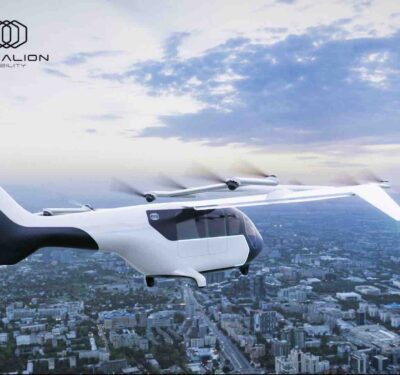Editor’s Note: As attention increases regarding aircraft activity in the eastern U.S., Inside Unmanned Systems will be providing substantive context from UAS and AAM industry experts.
Amit Ganjoo is the Founder and CEO of ANRA Technologies, a leading provider of airspace and mission management solutions for UAS and AAM operations. A licensed pilot and lifelong aviation enthusiast, Amit also builds experimental aircraft. He previously served on the Global UTM Association board and the FAA Advanced Aviation Advisory Committee.

The recent drone sightings in New Jersey have become a media frenzy, with speculative commentary flooding online platforms. It’s not surprising, as drones capture public imagination like few other technologies. However, much of the current discourse jumps between two extremes: concerns about swarms of malicious drones and the assumption that these sightings are innocent misidentifications of small general aviation (GA) aircraft. The truth, as is often the case, likely lies somewhere in between.
It is plausible that some people are genuinely seeing drones, especially as their use becomes more prevalent for commercial operations, personal hobbies, and even government testing. At the same time, others may be mistaking distant aircraft or other light sources for drones, particularly at night when visibility is low and navigation lights can create optical illusions. These two realities fuel confusion and speculation, exacerbated by the lack of a comprehensive system to identify and track what is really happening in the airspace.
The absence of clarity is not due to a lack of technology but rather the slow pace of its widespread adoption. Remote identification, for instance, is a tool that can address these uncertainties. By requiring drones to broadcast their identity, location, and operator information, remote ID promotes accountability and transparency. When integrated into a broader UTM system, which includes both cooperative (actively tracked) and non-cooperative (passively detected) airspace users, we can achieve a unified operational picture. This would provide a true representation of what is in the air, helping distinguish between genuine drones and false alarms, and alleviating public concerns.
This isn’t a time for fearmongering, but rather a moment to acknowledge that drones are here to stay. They are not just a fleeting trend but an essential part of the future of aviation, commerce, and public services. To fully embrace this future, we must ensure the systems are in place to prioritize safety, accountability, and integration with the existing national airspace infrastructure.
Equally important is fostering education and social acceptance. The public must understand the role drones play in improving our lives, from delivering medical supplies to enhancing emergency response. Sensationalism and misinformation only delay this progress. By investing in both technology and public awareness, we can transform drones from perceived threats to trusted tools.
The recent sightings should serve as a wake-up call—not about potential risks but about the need for a collaborative approach. This is the time to align regulatory frameworks, technological capabilities, and public understanding to create a future where drones coexist seamlessly with traditional aviation and the broader community.






